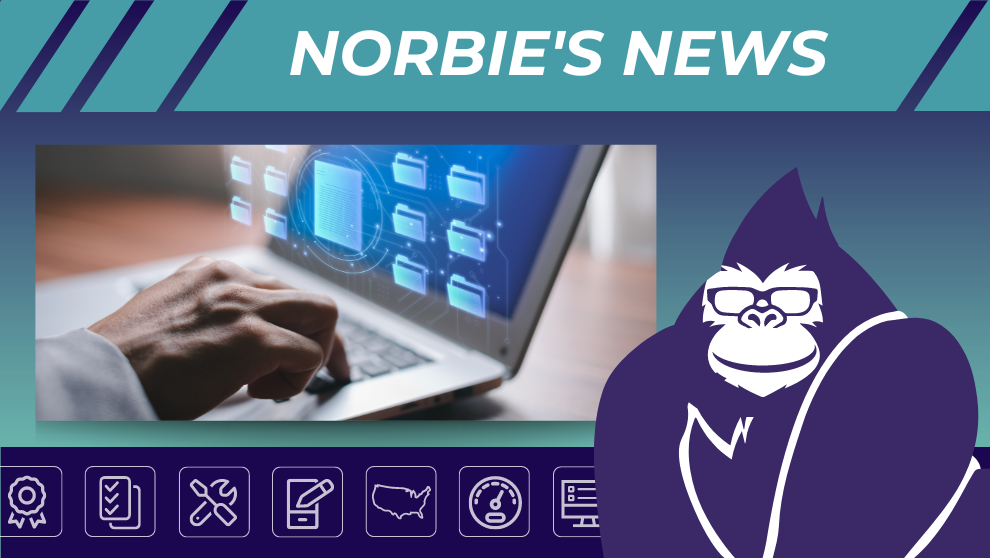
Projections for Hybrid and Work-From-Home Models in 2024
SHARE STORY
By Oscar Farias, VP of Sales Engagement
In recent years, the professional landscape has transformed in scale and scope. The emergence and adoption of hybrid and work-from-home (WFH) models represent a shift in how we conceive of and engage with our work environments. Initially propelled by necessity during COVID lockdowns, these models have evolved into a modality for a segment of the workforce and employers. This evolution signifies more than a change of location; it reflects a reconsideration of balance, productivity, and well-being. For example, many employers have enjoyed the benefits of the virtual interview process, and 93% of employers wish to continue conducting interviews remotely.
As we look to 2024, the significance of staying abreast of trends in hybrid and WFH models is clear. Understanding these trends is important for organizations aiming to remain competitive and appealing to talent. The landscape is dynamic, with technologies, philosophies, and expectations reshaping work. In this context, foresight and preparation matter. This piece aims to delve into the trends for 2024, offering insights and guidance to help your organization navigate this terrain with confidence and acumen.
"9 out of 10 companies are looking to return to office by the end of 2024, though only 44% of those surveyed said that at least three-quarters of employees would be required to work in person..."
– Source: ResumeBuilder.com
The Evolution of Hybrid Work Models: Balancing Flexibility and Productivity
Venturing into the era of hybrid work, a theme that emerges is the balance between flexibility and productivity. While being fully remote is extremely popular among younger generations, “One in three remote workers [report] their biggest struggle is that they stay home too often because they don’t have a reason to leave,” according to Remote Work from Home’s blog on LinkedIn. So for some, a balanced hybrid model is pivotal and transformative, which dictates its success across industries. Let's explore how this evolution is taking shape as it transforms how we look at the nature of work schedules for generations to come.
Customization of Hybrid Schedules
Organizations are moving past the one-size-fits-all approach, customizing hybrid schedules to match employee roles and productivity. This enhances job satisfaction and output by respecting individuals' work rhythms and lifestyles, allowing for optimal work contributions. This shift reflects a deeper understanding of productivity, prioritizing effective performance over mere physical presence.
Technology and Collaboration
Technology is crucial in hybrid work for team collaboration. Advances in tools have enhanced remote work, connecting home and corporate spaces. These improvements facilitate communication, collaboration, and community. Into 2024, further refinement of these tools will continue to diminish the impact of distance on work productivity and team unity.
Redesigning Physical Office Spaces
The move to hybrid work has led to a rethink of office design, prioritizing collaborative spaces for teamwork and creativity. Offices are becoming centers for interaction, not just daily tasks, emphasizing areas for meetings and brainstorming. This shift recognizes the office's role in fostering collaboration and building teams in a hybrid setting.
In summary, hybrid work in 2024 will likely combine flexibility with productivity through customized schedules, collaborative technology, and redesigned offices for teamwork. This sets the foundation for work defined by outcomes and engagement, ensuring the hybrid model's sustainability and benefit for everyone.
One in three remote workers [report] their biggest struggle is that they stay home too often because they don’t have a reason to leave...
– Source: Remote Work from Home: LinkedIn Blog
The Rise of Employee Wellness Programs in Remote Work Settings
Emerging hybrid and WFH models, used by organizations that recognize the health and well-being of employees, emphasize employee wellness, integrating health programs into remote policies such as the following:
Mental Health Support
In the remote work era, employee mental health is prioritized due to challenges like isolation. Companies are responding with more virtual counseling and mental health days to support staff, reduce stress, and improve well-being. This investment in mental health boosts productivity and retention.
Virtual Fitness and Well-being Classes
Organizations are promoting physical health in remote workforces by partnering with fitness platforms and offering virtual class memberships. This approach, catering to various preferences and fitness levels, facilitates routine exercise, acknowledging its importance for mental health and job performance.
Flexible Scheduling for Wellness
Flexible scheduling in remote work lets employees adjust their hours for health and well-being, supporting time management for better productivity and health. This enables adjustments for mindfulness, family, and more, helping employees excel personally and professionally.
Embracing wellness initiatives helps organizations meet remote workforce needs, fostering a resilient and engaged team. Moving into 2024, the growth of employee wellness programs in remote settings will enhance organizational cultures, highlighting the connection between employee well-being and business success.
Challenging Conventional Wisdom: The Limitations of Remote Work in Fostering Innovation
While the shift toward remote and hybrid work models has been embraced for flexibility and inclusivity, there are still some detractors. According to the results of a survey conducted by Resume Builder, 9 out of 10 companies are looking to return to office by the end of 2024, though only 44% of those surveyed said that at least three-quarters of employees would be required to work in person, and only 19% would require a 5-day workweek. This section highlights some of remote work's limitations in fostering the spontaneous collaboration that seeds ideas–ideas that certain industries need for their work to thrive.
The Value of In-Person Collaboration
Spontaneous interactions are crucial for innovation, offering idea exchanges and feedback not found in virtual meetings. In-person collaboration provides unique communication and energy, essential for creativity and suggests remote teams face innovation challenges.
Sectors More Suited to In-Person Work
Some industries benefit more from in-person work due to their work nature. Fields like research and development, creative industries, and healthcare innovation rely on collaboration, access to equipment, and real-time idea iteration. In these sectors, exchanging knowledge and ideas is critical for breakthroughs. Identifying these needs is crucial in crafting work models that support more tactile collaboration.
Potential Long-Term Impacts on Corporate Culture
The shift to remote work has implications beyond operations; it can change a company's culture. Corporate culture thrives on connections and shared experiences. Remote work can dilute these interactions, challenging team cohesion, belonging, and a unified identity. Over time, this erosion can affect engagement, loyalty, and innovation capacity.
In conclusion, remote and hybrid work models offer advantages, but they must be aware of their limitations, especially in innovation. Organizations can develop strategies that balance remote work benefits with challenges by understanding in-person collaboration, recognizing industry needs, and addressing cultural impacts. This approach is key to an environment where innovation thrives, regardless of work location.
As we look to 2024, the significance of staying abreast of trends [...] is clear. Understanding these trends is important for organizations aiming to remain competitive and appealing to talent.
Conclusion
Having explored the changes hybrid and work-from-home models have brought to the professional workspace in recent years, it's clear the future of work demands a flexible approach tailored to diverse sector needs, roles, and individual preferences. This evolution, underscored by the balance between flexibility and productivity, the rise of employee wellness programs, and the critical look at remote work's impact on innovation, reveals that a one-size-fits-all model needs to be updated. The move towards more personalized work arrangements and integrating wellness into work culture reflects a shift towards valuing employee well-being alongside productivity.
Navigating these changes into 2024, organizations must prioritize adaptability, and responding to workforce needs while fostering productivity and innovation. This shift towards a holistic work view emphasizes the importance of in-person collaboration and suggests that the future of work transcends physical location. It's about the quality, purpose, and identity of work. Embracing these evolving trends, organizations have a unique opportunity to redefine the workplace, promoting a more inclusive, flexible, and well-rounded approach that benefits everyone involved.
Oscar Farias is VP of Sales Engagement of Builders & Tradesmen's Insurance Services, Inc., an Amynta Group Company.
Builders & Tradesmen’s Insurance Services Inc.
BTIS is committed to providing robust, individualized products and the highest level of service. Our easy-to-use commercial insurance platform, educational tools, and helpful underwriters make it simple for producers to diversify their books of business by expanding their product portfolios.
Part of the Amynta Group, BTIS is a nationwide insurance intermediary with a small-business attitude. We believe in building solid relationships through communication and a genuine concern for the success of our retail broker clients and the policyholders they serve.
For additional information, visit www.btisinc.com or call (877) 649-6682


